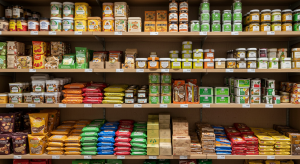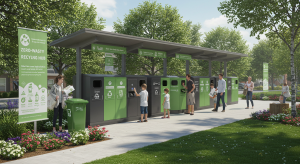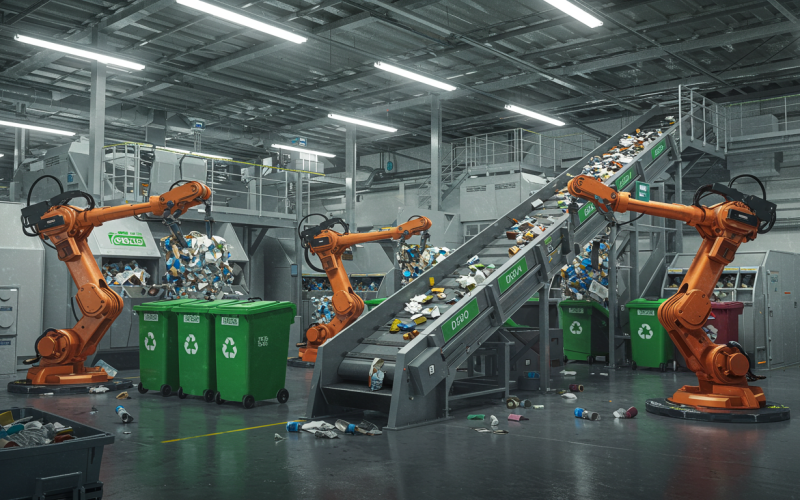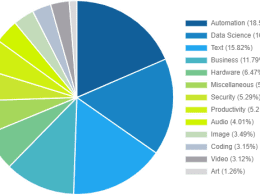The recycling industry is undergoing a dramatic shift in 2025. Driven by innovation, regulation, and increasing environmental urgency, these trends are shaping the future of waste management. Here’s an in-depth look at the forces transforming recycling this year.
The fashion world is finally taking recycling seriously. In 2025, brands are embracing sustainable textiles and circular fashion. Clothing lines now incorporate post-consumer fibers, recycled polyester, and natural dyes.
Retailers are offering take-back schemes that give customers store credit in exchange for old clothes. These garments are then reused, upcycled, or turned into insulation and industrial materials.
Digital IDs in clothing labels help track material content and provide instructions for end-of-life recycling. Consumers are becoming more aware of the environmental to Automation and Smart Technology in Recycling
Automation is no longer optional — it’s essential. Recycling plants are integrating advanced robotics and machine learning to streamline operations. Smart sorting machines now identify, separate, and classify materials with incredible accuracy. They detect color, shape, and material type in milliseconds.
Artificial intelligence (AI) optimizes workflow by predicting maintenance needs and reducing downtime. These systems even learn from errors to improve future accuracy. As a result, facilities are processing more waste with fewer errors and higher recovery rates.
Sensors and Internet of Things (IoT) devices also monitor contamination levels in real time. This helps reduce rejected loads and improves the quality of recyclables sent to manufacturers.
The Rise of Circular Economy Models
Traditional recycling follows a linear model — use, discard, recycle. In 2025, the circular economy dominates. This system focuses on designing waste out of the equation. Products are made to be reused, repaired, or fully recycled at the end of their life cycle.
Companies are investing in sustainable materials and modular designs. This makes disassembly easier and extends product lifespan. For example, electronics are now being built with standardized parts that can be replaced instead of discarded.
Many governments are mandating circular practices. Businesses that adopt these principles benefit from tax breaks and favorable public perception. The goal is clear: eliminate waste through smarter design and responsible consumption.
E-Waste Management Gains Urgency
The world generates over 50 million tons of e-waste annually, and it’s increasing. In 2025, this challenge is finally being addressed. Nations are implementing e-waste directives that require manufacturers to manage their products post-sale.
Tech companies are launching trade-in programs and repair incentives. E-waste centers are being equipped with specialized tools to safely extract valuable metals like gold, silver, and palladium. These materials are reused in new electronics, reducing mining and environmental damage.
Consumers are also stepping up. Awareness campaigns highlight the dangers of improper disposal. As a result, more people are dropping off old devices at certified centers.
Stricter Government Regulations and Global Policies
Recycling in 2025 is shaped heavily by law. Countries are passing legislation that mandates recycling rates and penalizes non-compliance. Extended producer responsibility (EPR) laws require brands to take accountability for the waste they create.
The European Union leads the charge with aggressive zero-waste targets. Meanwhile, the U.S. and Asia are expanding recycling infrastructure through public-private partnerships. Countries like Japan and Sweden showcase how well-managed recycling systems can benefit the environment and economy.
International cooperation is improving too. Global pacts on plastic pollution are encouraging shared technology and unified waste classification systems.
Sustainable Packaging Innovations Transform the Market

Packaging waste makes up a significant portion of municipal solid waste. In 2025, this is being tackled head-on. Biodegradable and compostable materials are replacing single-use plastics. Packaging design now emphasizes reusability and ease of recycling.
Companies are experimenting with seaweed-based wrappers, mushroom foam containers, and recyclable aluminum pouches. Water-soluble films for detergents and dissolvable pods for food packaging are gaining popularity.
Eco-labeling is also evolving. Clear icons and QR codes guide consumers on proper disposal, boosting recycling rates and reducing contamination.
Greater Consumer Awareness and Engagement
Consumer behavior is a powerful force in recycling success. In 2025, people are more informed and engaged. Social media, school programs, and government campaigns are encouraging responsible waste practices.
Mobile apps offer real-time sorting instructions based on local regulations. Smart bins reward users for recycling correctly, using gamification to drive behavior. People demand transparency from brands about their sustainability efforts.
More consumers now choose products with minimal or recyclable packaging. This demand is pushing companies to prioritize sustainable choices across the supply chain.
Investment in Advanced Recycling Technologies
Technological innovation is a cornerstone of the recycling revolution. Chemical recycling and pyrolysis are opening new possibilities. These methods break plastic down to molecular levels, allowing it to be reused as virgin-quality material.
Companies are building large-scale plants to process previously unrecyclable materials. This includes mixed plastics, textiles, and contaminated food containers. Hydrogen-based and enzyme-assisted recycling are in pilot phases with promising results.
Investors are backing startups focused on clean tech and sustainable materials. With increased funding and public interest, these technologies are moving from research to reality.
Local Recycling Initiatives and Decentralized Solutions
While big facilities play a key role, local programs are becoming vital. In 2025, decentralized recycling is proving effective. Community recycling hubs, mobile collection units, and local composting centers are growing fast.
These smaller initiatives reduce the need for long-haul transportation. That lowers emissions and operating costs. They also increase accessibility for rural and underserved areas.
Schools, churches, and local businesses are partnering to raise awareness and encourage participation. Grassroots efforts often succeed where top-down mandates fall short.
Textile and Fashion Industry Takes Responsibility

The fashion world is finally taking recycling seriously. In 2025, brands are embracing sustainable textiles and circular fashion. Clothing lines now incorporate post-consumer fibers, recycled polyester, and natural dyes.
Retailers are offering take-back schemes that give customers store credit in exchange for old clothes. These garments are then reused, upcycled, or turned into insulation and industrial materials.
Digital IDs in clothing labels help track material content and provide instructions for end-of-life recycling. Consumers are becoming more aware of the environmental toll of fast fashion. Thrift shopping, rental services, and capsule wardrobes are trending.
Corporate Social Responsibility (CSR) Drives Change
Businesses are feeling the pressure to act. CSR strategies now prominently feature recycling and sustainability. Companies publish annual impact reports showing how much waste they’ve diverted from landfills.
Major brands are investing in closed-loop systems. This reduces costs and appeals to environmentally conscious customers. Certifications like Cradle to Cradle, B Corp, and ISO 14001 are now considered industry standards.
Recycling is no longer a side project — it’s a core business objective.
Zero-Waste and Plastic-Free Movements Go Mainstream

The zero-waste lifestyle is more than a trend — it’s a global movement. In 2025, millions of households follow plastic-free principles. Bulk stores, refill stations, and reusable packaging systems are widespread.
Cities like San Francisco, Amsterdam, and Seoul lead the way with aggressive zero-waste goals. Public infrastructure supports composting, recycling, and reuse at every level.
Events, restaurants, and retailers now offer incentives for customers who bring their own containers. Waste-free living is becoming more practical and accessible every day.
Recycling in the Construction and Demolition Sector
Construction waste accounts for a large portion of global landfill content. In 2025, this sector is evolving fast. Demolition debris is now sorted on-site and sent to specialized recycling centers.
Concrete is crushed and reused, metal is melted down, and wood is repurposed. New construction methods use prefabricated components that minimize excess. Architects are designing buildings for disassembly and future material recovery.
Regulations require developers to submit waste management plans before receiving permits. This shift is helping the industry align with global sustainability goals.
The Role of Trash Pickup Companies in the Recycling Revolution
Local waste handlers are becoming key players in the green transition. Modern trash pickup companies are evolving beyond traditional collection. Many now offer recycling education, zero-waste consultation, and even separate bins for organics and recyclables.
These companies play a vital role in community awareness and compliance. In cities like Glendale, providers are making it easier than ever to divert waste from landfills through accessible scheduling, digital platforms, and eco-conscious hauling methods.
Their contribution ensures that both homes and businesses can participate in sustainable waste management without disruption.
Conclusion: A New Era for Recycling Has Arrived
The recycling industry in 2025 is dynamic, tech-driven, and more essential than ever. The trends shaping it are interconnected — each one reinforcing the next. From smarter technology and tighter regulations to more responsible consumer behavior, every factor plays a role.
To keep pace, companies, governments, and individuals must work together. The shift toward a circular, sustainable future isn’t just a vision anymore — it’s happening right now. By embracing the











